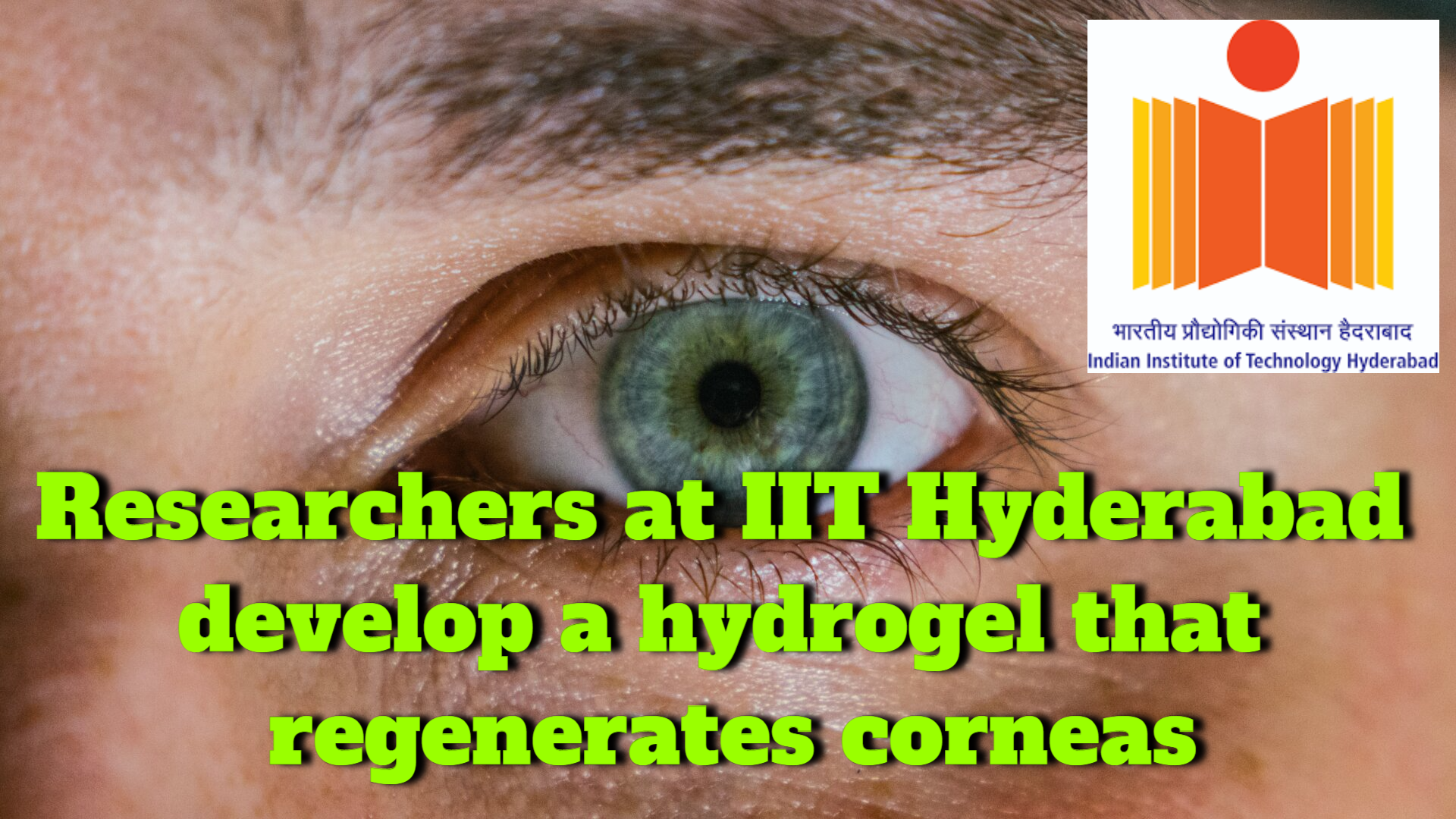There’s a new way to prevent corneal scarring courtesy to scientists from the Indian Institute of Technology, Hyderabad. Eye banks and slaughterhouse corneas were used in the development of a hydrogel that can restore the cornea without leaving scars when injected.
Key Highlight:
- Scientists have developed a tissue-derived hydrogel that can restore the cornea without scarring using rejected slaughterhouse cornea and disqualified eye bank cornea.
- The method might be utilized to prevent blindness in rural north India where donor cadaveric transplantation grade cornea is scarce.
- Researchers also hope to use 3D bioprinting technology to create a human cornea that would replace the cadavers.
It is now possible to prevent corneal scarring because to new technology developed by Indian Institute of Technology, Hyderabad (IIT-H) researchers (IIT-H). Aside from partial donor corneal graft or transplantation, there is no treatment for corneal scarring at the moment.
corneal scars are spots or irregularities on the cornea that can interfere with its ability to focus light accurately. Biomedical researchers at IIT-H have worked together with eye institute and cellular and molecular biology experts to develop an eye surgery process that is much less intrusive and may eventually replace more sophisticated surgical techniques.
Scientists have developed a tissue-derived hydrogel that can restore the cornea without scarring using rejected slaughterhouse cornea and disqualified eye bank cornea.
“We have tested the corneal hydrogel for two complications associated with the cornea — corneal scarring and keratoconus — and, in both cases, we found that this can be successfully used as a new treatment strategy to avoid complicated surgeries,” Shibu Chameettachal, PhD scholar, department of biomedical engineering, IIT-H, said, adding that the institute was also planning human pilot studies for some of its applications soon.
People in nations where eye banks and donor tissue are scarce feel that this technique will have an enormous impact in the future.
It’s much easier to find quality eye treatment in the south than in the north.” For those with corneal perforation or scarring, they must travel to the south of India for treatment. This is especially true in places like Uttar Pradesh and Bihar. Dr. Vivek Singh, senior scientist at LVPEI and one of the study’s lead investigators, claimed that the method might be utilized to prevent blindness in rural north India where donor cadaveric transplantation grade cornea is scarce.
Researchers also hope to use 3D bioprinting technology to create a human cornea that would replace the cadaveric donor cornea now used. Hydrogel production is covered by Indian and US patents.
IIT-Hyderabad researchers develop alternative to corneal transplantation. Dr Falguni Pati, Associate Professor, Department of Biomedical Engineering @IITHyderabad, his research team developed hydrogel from discarded corneas from human, bovine sources using simple & novel method. pic.twitter.com/kWl16vpbr8
— All India Radio News (@airnewsalerts) September 30, 2021




